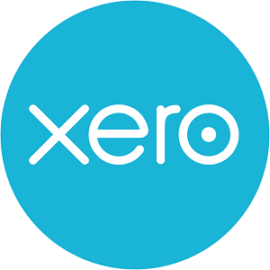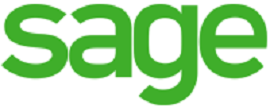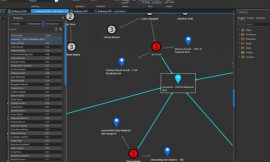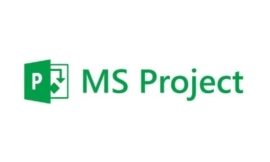Accounting software can radically simplify any business owners’ life by automating convoluted financial tasks. From bank reconciliation to invoicing, online payment acceptance to expense tracking, your accounting software should perform essential functions with minimal time and effort on your part while keeping your overall software costs low.
For most small and midsize Canadian businesses, we recommend Xero’s accounting software, which offers well-rounded features, a comparatively low starting price and built-in integrations with more than 1,000 apps. Keep reading to find out if Xero or one of the five other options we review below is the best accounting software for your Canada-based business.
Top accounting software for Canadian businesses: Comparison table
| Vendor | Starting price | Free trial | Expense tracking | Third-party integrations | Learn more |
|---|---|---|---|---|---|
| Xero | $20 CAD/mo. | 30 days | Limited | 1,000+ apps | Try Xero |
| QuickBooks Online | $24 CAD/mo. | 30 days | Yes | 450+ apps | Try QuickBooks |
| Wave Accounting | $0/mo. | N/A | Yes | Through Zapier only | Try Wave |
| Sage Intacct | Custom | None listed | Yes | Open APIs | Try Sage |
| Zoho Books | $0/mo. | 14 days | Yes | Limited | Try Zoho Books |
| FreshBooks | $22 CAD/mo. | 30 days | Yes | 100+ apps | Try FreshBooks |
Plan and pricing information up to date as of 12/12/2023.
Xero: Best overall Canadian accounting software

Our star rating: 4.4 out of 5
Xero is a top international accounting solution used by small and midsize businesses in Canada, Australia, the UK and more. Each of its plans are incredibly fully featured with excellent automations, including scheduled payment reminders to ensure you’re paid on time, plus automatic syncing with hundreds of financial institutions to keep your books up to date.
Crucially, Xero syncs with more than 1,000 third-party apps — more than any other small-business accounting company. Its sheer convenience makes Xero hard to beat, especially for busy business owners who don’t want to waste time updating their payroll, accounting, expense tracking, invoicing, billing, CMS and other systems independently.
However, unlike most comparable accounting solutions, Xero charges an additional fee for expense tracking. Plus, its basic plan limits users to sending 20 invoices and quotes a month and reconciling just five bills a month. To qualify for unlimited billing and invoicing, you’ll have to upgrade to Xero’s mid-tier plan, which is double the cost of Xero’s entry-level plan.
Get more information by reading our Xero software review.
Pricing
Xero has three plans for Canadian businesses starting at the following price points:
- Xero Starter: $20 CAD per month. Includes accounting basics like billing, invoicing and bank reconciliation.
- Xero Standard: $48 CAD per month. Includes Starter features + bulk transaction reconciliation.
- Xero Premium: $67 CAD per month. Includes Standard features + multi-currency management and advanced analytics.
Under Xero’s current promotion, new users can either sign up for a fully featured 30-day free trial or opt for 50% off their plan’s base cost for four months.
Xero also offers add-on features for an extra monthly fee:
- Expense tracking: $5 per month per user.
- Job tracking and project-based accounting: $10 per month for one user plus $7 per additional user per month.
Top accounting features
- Customizable online invoices with automatic payment reminders and multiple payment acceptance options.
- Batched pre-scheduled bill payments.
- Short-term cash flow tracking and financial forecasting with all plans.
- Partner network of 200,000 accountants and bookkeepers trained in Xero’s software.
- Highly reviewed mobile accounting app with invoicing, payment acceptance and receipt capturing capabilities.
- Integrates with more than 1,000 third-party apps, including Canadian payroll solutions like Deel, Wagepoint, Oyster, Rise and Knit.
Pros and cons
| Xero pros | Xero cons |
|---|---|
|
|
QuickBooks Online: Most comprehensive software

Our star rating: 4.6 out of 5
QuickBooks is one of the most recognized accounting software brands across the globe — and for good reason. Its online accounting solution — built for non-accountant business owners rather than financial professionals — is extremely accessible for new users. While the software is fairly simple to set up by yourself, new QuickBooks customers can take advantage of a 55-minute onboarding call with a QuickBooks professional who will help you get started.
QuickBooks Online doesn’t sync with quite as many apps as Xero, but with 450 built-in application integrations, it’s still an obvious contender for the most time-saving, efficient accounting software on the market.
Plus, Intuit QuickBooks Online has more comprehensive accounting features than most other solutions for small-business owners, and it generally has fewer limitations. For instance, QuickBooks Online doesn’t limit users to a certain number of invoices, bills, quotes or clients depending on the plan.
Get more information by reading our QuickBooks software review.
Pricing
Intuit QuickBooks Online has four online accounting software plans:
- QuickBooks EasyStart: $24 CAD per month. Includes basic accounting features like invoicing, billing and payment acceptance.
- QuickBooks Essentials: $48 CAD per month. Includes EasyStart features + multi-currency support, time tracking and bill management.
- QuickBooks Plus: $72 CAD per month. Includes Essentials features + inventory tracking and budgeting.
- QuickBooks Advanced: $140 CAD per month. Includes Plus features + custom reporting, employee expense management, batch invoicing, desktop app and more.
New users can take advantage of three-month 50% off discounts (for EasyStart and Essentials plans) or 60% off discounts (for Plus and Advanced plans). Alternatively, you can subscribe to any plan free for 30 days.
QuickBooks typically offers a discount for businesses that need multi-entity accounting, though you’ll need to call QuickBooks directly to request a quote.
Top accounting features
- Unlimited income and expense tracking.
- Expense categorization, sales tax tracking and receipt organization for easier tax filing.
- Access for up to 25 users and three accountants (depending on the plan).
- Optional QuickBooks Payroll add-on.
- Free onboarding call for all new users.
- Advanced features include workflow automations, customizable role-based access, data backups, custom reporting and automatic Excel spreadsheet syncing.
- Integrates with 450+ third-party apps, including HR and payroll software like Zoho People, Deel, Payworks and Wagepoint.
Pros and cons
| QuickBooks pros | QuickBooks cons |
|---|---|
|
|
Wave Accounting: Best free accounting software

Our star rating: 4.0 out of 5
Wave Accounting’s completely free accounting solution is used by freelancers and small-business owners across North America. Wave’s free plan lets businesses invoice an unlimited number of customers, accept online payments, track income and generate key accounting reports. The only fee you’ll incur using the free version of Wave’s software is the industry-standard payment processing fee all users are charged when conducting online transactions.
Wave’s sole paid plan, Wave Pro, adds unlimited receipt scanning, customer support and thorough automation.
With just two plans, Wave Accounting isn’t particularly scalable. Plus, it doesn’t sync natively with any third-party apps. However, Wave’s free plan includes the most crucial bookkeeping and accounting features, from customizable invoicing to bookkeeping records. And while it doesn’t include built-in integrations, you can integrate most apps with Wave using Zapier.
Get more information by reading our Wave Accounting software review.
Pricing
Wave Accounting has two plans, one free and one paid:
- Wave Starter: $0 per month. Includes basic bookkeeping and accounting features only.
- Wave Pro: $20 CAD per month. Includes receipt-scanning, automation and customer service.
Wave Starter users can add unlimited receipt scanning for an additional monthly fee. Users of either plan can opt for either a one-time or ongoing monthly live bookkeeping advisory service.
Top accounting features
- Unlimited customizable invoices.
- Unlimited expense and income tracking.
- Basic financial reports, including statement of cash flows, balance sheet and income statement.
- Syncs with 15,000 banking and financial institutions across Canada and the U.S. through Plaid.
- Integrates with third-party apps (through Zapier only).
Pros and cons
| Wave pros | Wave cons |
|---|---|
|
|
Sage Intacct: Best for complex finances

Our star rating: 4.6 out of 5
If your business’s finances are too complex for Wave, Xero or QuickBooks Online, Sage Intacct could be your ideal accounting solution. While Sage’s features can accommodate businesses of any size, no matter how small, its custom pricing and comprehensive datasets might make it more suited to midsize and large businesses focused on growth as well as enterprises with hefty accounting needs.
Sage’s dashboard shows you key metrics upfront in a user-friendly, easy-to-scan format. Metrics are always presented in real time to give you completely up-to-date insights. Sage also boasts an impressive, intelligent general ledger that simplifies multi-business management (for entities both domestic and global). It generates the most detailed reports of any software on our list, providing you with essential accounting insights that keep your business focused on growth.
Pricing
Sage doesn’t list its prices online. Interested parties should contact Sage directly to request a quote.
Top accounting features
- Seamless integration with Sage Intacct Payroll (powered by ADP).
- Multi-currency GL support.
- Accounts receivable and payable.
- Hospitality, nonprofit, healthcare and other industry-specific accounting solutions.
- Thorough educational resources and customer support.
- Excellent reporting features.
Pros and cons
| Sage pros | Sage cons |
|---|---|
|
|
Zoho Books: Most scalable software

Our star rating: 4.7 out of 5
If you want Canadian accounting software that grows with your business, from small startup to successful enterprise, put Zoho Books at the top of your list. With six accounting plans — including one free plan for businesses with an annual revenue below $50K CAD — Zoho Books can accommodate the smallest of small businesses to companies with hundreds of dedicated employees.
Zoho’s cheapest paid plan includes access for three users plus an accountant. (With the exceptions of Wave and Xero, most accounting software limit you to one user with the cheapest plan.) You can add as many extra users as you like to any plan for a low monthly fee, and all Zoho plans apart from the free plan come with pre-built user roles to make collaboration and task delegation as pain-free as possible.
Also See: Vendor Comparison: Small Business Financial Accounting Software (TechRepublic Premium)
Zoho’s biggest drawback is its lack of a built-in payroll solution. While you can build a custom app integration through Zapier, it’s frustrating that Canadian Zoho users don’t have a go-to payroll solution that integrates seamlessly with their accounting software.
Get more information by reading our Zoho Books software review.
Pricing
With all plans (except the free plan), Zoho Books customers can choose between paying month to month or paying annually:
- Zoho Free: $0 per month for businesses with an annual revenue <$50K CAD.
- Zoho Standard: $20 CAD per month (billed monthly) or $15 CAD per month (billed annually).
- Zoho Professional: $35 CAD per month (billed monthly) or $30 CAD per month (billed annually).
- Zoho Premium: $50 CAD per month (billed monthly) or $40 CAD per month (billed annually).
- Zoho Elite: $200 CAD per month (billed monthly) or $165 CAD per month (billed annually).
- Zoho Ultimate: $350 CAD per month (billed monthly) or $290 per month (billed annually).
Each plan comes with a set number of users plus free accountant access, though customers may add more users to any plan for an extra $3 per user per month (when billed annually).
Top accounting features
- Multiple payment acceptance methods with each plan.
- Multi-language invoicing.
- Fully featured mobile accounting app.
- Automated tax calculations.
- Chart of accounts with sub-accounts included with every plan.
- Inventory tracking (available with higher-tier plans only).
- Vendor portal.
- Built-in app integrations with Zoho suite of products, including Zoho Expense, Zoho Projects and Zoho People.
- Additional integrations with third-party business software like Avalara, Zendesk and Twilio with custom integrations through Zapier.
Pros and cons
| Zoho Books pros | Zoho Books cons |
|---|---|
|
|
FreshBooks: Best for freelancers

Our star rating: 4.1 out of 5
If you’re a freelancer in a project-based industry (for instance, construction), FreshBooks’ customizable invoices might make it the most appealing accounting software option on our list. Its invoices are incredibly easy to generate, both on FreshBooks’ online interface and mobile invoicing app, and have thorough automations that make it easier to get paid on time, including automatic late fee charges, late payment reminders and recurring invoices.
Unlike most other accounting providers, FreshBooks includes unlimited project-based time tracking at no additional charge with each plan. You can also use FreshBooks for project-based budgeting and billing. Expenses and hours worked are simple to sync to your invoice, ensuring your final bill reflects the exact amount of time you spent on each project.
While FreshBooks has more invoice-friendly features than many accounting companies, its cheapest plan isn’t a particularly robust accounting solution. The plan lacks true double-entry accounting, has no general ledger and lacks free accountant access, which makes it unsuitable for all but the smallest of businesses.
Additionally, each plan except the most expensive includes access for just one user. Additional users cost $13 per user per month — $10 more than Zoho Books’ additional-user fee. As a result, FreshBooks isn’t a top choice for budget-conscious businesses that need multiple pairs of eyes on their financial records.
Get more information by reading our FreshBooks software review.
Pricing
FreshBooks has four plans, three of which have upfront pricing:
- FreshBooks Lite: $22 CAD per month. Includes unlimited invoices to up to five clients per month.
- FreshBooks Plus: $35 CAD per month. Includes unlimited invoices up to 50 clients per month.
- FreshBooks Premium: $60 CAD per month. Includes unlimited invoices to an unlimited number of clients per month.
- FreshBooks Select: Custom quote only. Includes unlimited invoices to an unlimited number of clients per month.
Customers can save 10% on each plan by paying yearly instead of month to month. Additionally FreshBooks frequently runs discounts of up to 75% off each plan’s base price for three months. Alternatively, new users can sign up for a 30-day free trial of any plan.
Apart from FreshBooks Select, each plan includes access for one user only. (Select allows access for two users.) Additional users cost $13 per user per month.
Top accounting features
- Unlimited customizable invoicing.
- Collaborative customer portal.
- Project-based time tracking, budgeting and billing.
- Online credit card payment acceptance and pre-authorized debits (PADs).
- App-based mileage tracking.
- Advanced features include accounts payable, dedicated account manager, data migration, custom setup and secure client credit card storage.
- Built-in integrations with more than 100 apps, including Payment Evolution and OneLocal.
Pros and cons
| FreshBooks pros | FreshBooks cons |
|---|---|
|
|
Our methodology
To review the best accounting software for Canadian businesses, we rated the most popular software options according to the following categories:
- Pricing, which included considerations like free trials, highest and lowest pricing plans and extra fees for key services.
- Basic accounting features, which included accounting reports, tax features, invoicing, billing, expense tracking, receipt scanning and income tracking.
- Advanced accounting features, which included inventory management, advanced reporting, automated workflows and project tracking.
- Third-party integrations, which included the number of built-in integrations and open API frameworks. (Note: We put a particular emphasis on accounting software with built-in Canadian payroll software integrations.)
- Overall ease of use, which included ease of setup, interface accessibility, mobile app access and customer reviews regarding software user friendliness.
- Overall customer service, which included considerations like 24/7 customer support, multiple modes of contact and additional fees for premium customer service.
We relied on first-hand research, verified user reviews and demo walkthroughs with customer service representatives to write our reviews. To learn more about the criteria we use to calculate star ratings, read our payroll methodology breakdown.
How do I choose the best accounting software for Canada-based businesses?
Now that you know the best cloud-based accounting options for your Canadian business, how do you determine which one is right for you?
First, consider which features you need the most, from invoicing to inventory tracking. Which features would be nice to have that aren’t necessarily deal breakers? And which features are you already getting through another software provider, like an expense tracking app or inventory management software?
Next, consider your budget. How much can you really afford to spend on accounting software to make the investment worth it? Make sure to consider issues like user limits: Generally speaking, the more people you add to your accounting software, the more expensive your software will be. Opting for accounting software with a low per-user fee or unlimited free users is your best option for keeping costs low.
You’ll also want to list which other business apps you already use to keep your business running. How important is it to you that your payroll and accounting software sync seamlessly? Do you want a maximally integrated app ecosystem, or are you comfortable updating software independently of each other?
While doing your research by reading reviews like ours and thoroughly reviewing each software company’s website is a good starting point, the next logical step is to sign up for a free trial. Using the software firsthand is the best way to determine if it will or won’t work for you. If your preferred software doesn’t come with a free trial, get in touch with a member of the sales team to schedule a free custom demo.
Also See: Best Practices for Choosing the Right Accounting Software (TechRepublic)
Frequently asked questions
What is the best accounting software in Canada?
Depending on your business, Xero is the best accounting software for Canada-based businesses. Its low starting price, customizable features, thorough integrations and friendly interface set it apart from most other cloud-based accounting solutions.
However, if Xero isn’t the best online accounting solution for you, QuickBooks Online, Zoho Books and Sage are excellent alternatives. Most accounting software companies offer free trials or free demos, so if you’re not sure which accounting provider to choose, sign up for a free trial or get in touch with the sales team for a custom demo.
Is QuickBooks used in Canada?
Yes, QuickBooks Online is available for Canada-based businesses. Plans start at $24 CAD per month.
What accounting standards are used in Canada?
As per the Canadian Accounting Standards Board, Canada conforms to the International Financial Reporting Standards (IFRS). All publicly accountable enterprises must meet IFRS requirements when issuing financial statements, and private companies generally follow these same standards as well.
Source of Article



